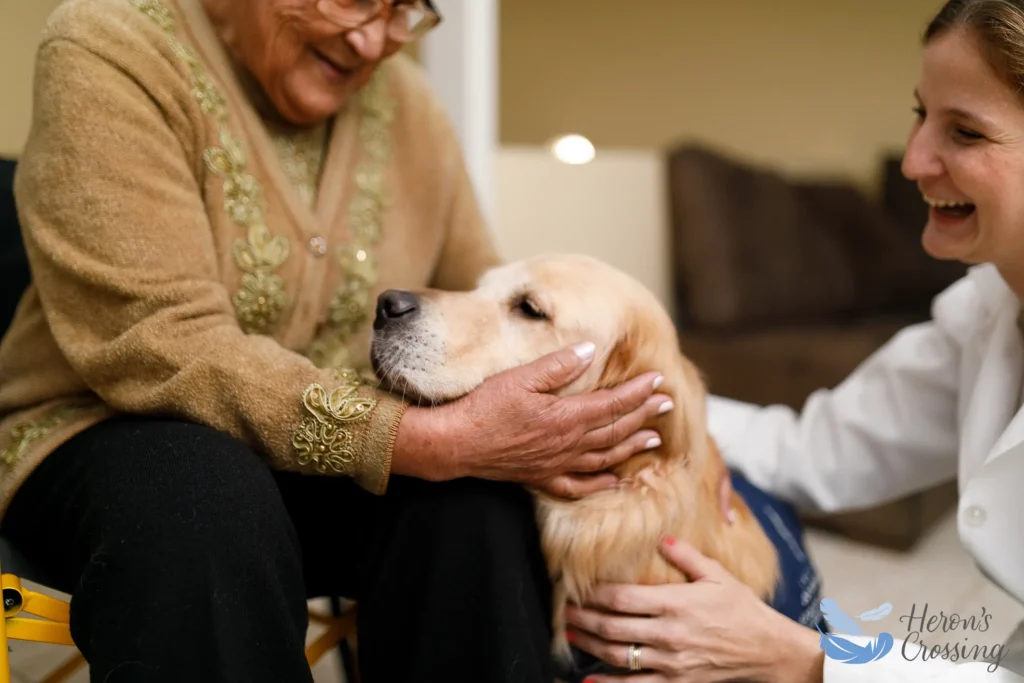Home service dogs or ‘skilled companion dogs’ help individuals with disabilities. They are trained to perform specific tasks, such as fetching items for those who are unable to walk. They monitor diabetics and epileptics, helping them if they fall, retrieving their medicines, or even calling for help. They remind those who need to take their medications at precise times. Guide dogs help blind or deaf people to continue an active lifestyle.
The US Department of Labor’s Americans with Disabilities Act (ADA) doesn’t specify their type of training or certification, or that they must wear a professional service dog vest or have a special ID tag. They just have to be a dog – any kind of dog – who helps someone with a specific disability. Sometimes the only clue you may notice in public is that the person and their dog are inseparable.
Diabetic Alert Dogs of America, for example, offers basic training for a person’s own dog, or a choice of one of their specially bred puppies who has had full training and is matched to the person’s temperament.
Guide dogs for those who are visually impaired, for example, are usually Labrador Retrievers who are bred for certain qualities such as learning skills, a good nature and patience. These puppies are usually fostered out so they can become accustomed to a home environment. Then they get qualified training. If they succeed, they are matched with a person having the disability of their specialty, who is then called their handler. The trainer remains in contact throughout the dog’s life to make sure that everything is going well.
Home service dogs are uniquely authorized through the ADA to enter restaurants, stores, public transportation and other places where pets would normally not be allowed. You just have to let the management know so accommodations can be made.
Some puppies fail their training. Others age before the right handler is found. These little buddies sometimes return to the breeder or the foster family, and, because they love to help others, may perform other unofficial functions, such as becoming a visiting dog at senior centers.
If they don’t go back to their origins, the training schools adopt these young dogs out to carefully chosen new pet parents. They have been raised in the best environments to be loving, loyal and helpful, so they are very special dogs. The waiting list for an adoption is 1-2 years, and there is usually a cost recovery fee of several thousand dollars for boarding, training and veterinary care that will go toward training another puppy. Even if she has completed her training, this dog will not be certified, and must not be put to work.
For those who do go on to be matched with a handler, it’s not all work and no play. They are also loving pets to their handlers. Their careful matching even includes personality traits like whether they both like to hike, or prefer to be couch potatoes. They will still remain inseparable.
The training school stays in touch, carefully assessing the dog’s ability to perform her duties. Is she getting tired, becoming achy, unable to handle the stress of being on alert? Dogs usually work about 8 to 10 years before being officially retired, as determined by the trainer. But there are times when retirement happens earlier due to sickness or injury, or the needs of her handler become greater than a dog can manage. What happens then?
The two are a well-oiled team by then, and both would be heartbroken if parted. The first option is to keep the dog with her handler or the handler’s family as a pet, and get a second guide dog, so they can still be together as much as possible.
Often a service dog absolutely refuses to retire, so the younger dog is brought in to take over the more strenuous duties at first. The weight of service will gradually shift to the new dog over time as the older dog learns that her handler is properly cared for, and she can relax.
But if the handler passes away or goes into a care facility, for example, and the family can’t keep her, the trainer will take the dog back to her training school, or sometimes back to her foster family or to the breeder. These dogs have great memories, and they will remember the people who cared for them years ago.
Some of the senior retired service dogs do become available for adoption through their training schools. Some have medical issues or behavioral quirks. The trainers carefully screen applicants again in the hopes of finding a perfect match for retirement with a loving family.
Home service dogs are remarkable for their skills and loving dedication. If you are interested in adopting, look online for ‘retired’ (or released) ‘service dog’ (or guide dog, therapy dog) ‘adoption’ to find training schools and placement services that may also have some retired Retrievers, German Shepherds or other breeds who need a restful retirement home.
Another option is to look for ‘senior service dog adoption’ to find rescue groups that help to place these older dogs.
Often service dogs refuse to stop being useful, so you’ll have to find parks and other places to take them, where they continue to shine their bright light of helpfulness and goodwill with others.
Heron’s Crossing provides end-of-life care for pets in the Metro Atlanta area. In-home appointments with compassionate vets are available. If you’d prefer a home-like setting away from your home, our Decatur office is also available by appointment.

